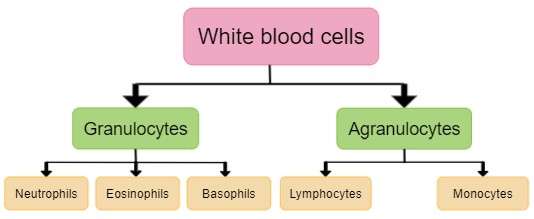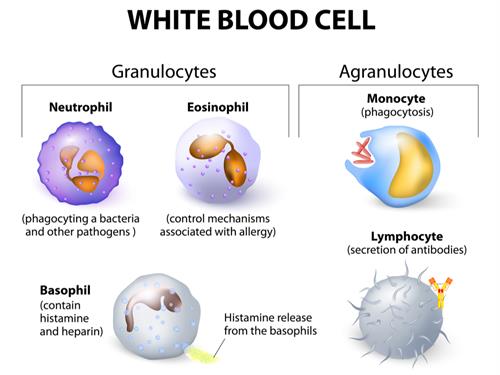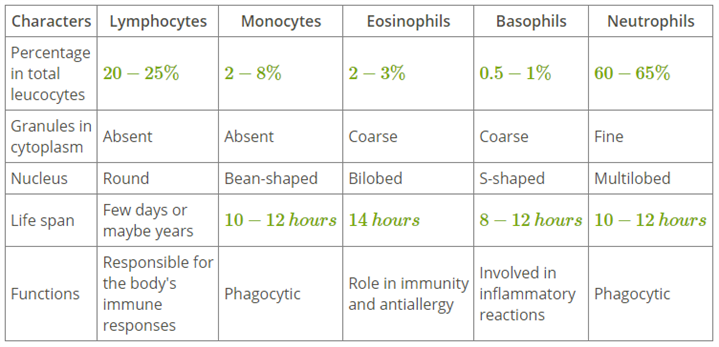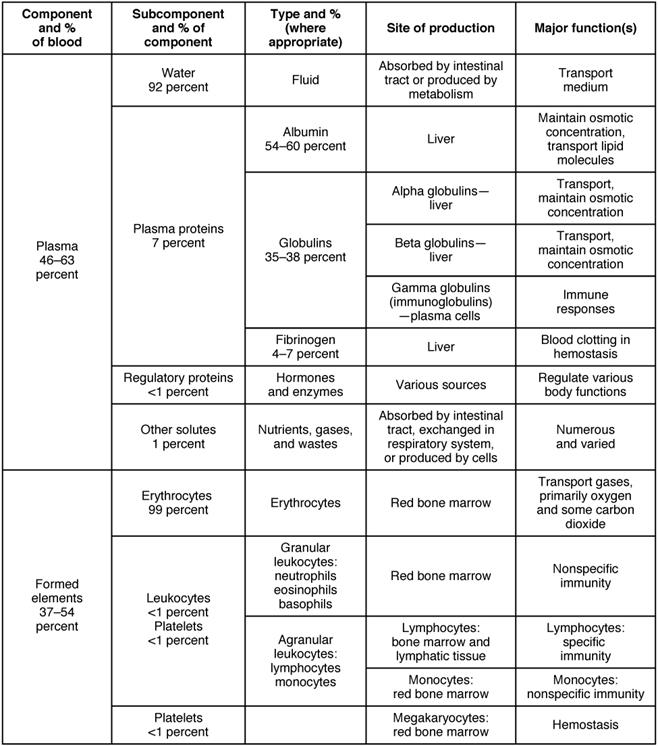PDF chapter test TRY NOW
White blood cells (WBCs) are colourless due to the lack of haemoglobin. They are nucleated and relatively lesser in number. WBCs are found in the bone marrow, thymus, spleen and lymph nodes. They are generally short-lived, which are capable of amoeboid movement. They aid in the defence mechanism of the body.
The leucocytes are of two types:
1. Granulocytes
2. Agranulocytes

Types of WBCs
Granulocytes:
They contain small granules in their cytoplasm. The nucleus of granulocytes is lobed or irregular. There are three types of granulocytes:
1. Neutrophils
2. Eosinophils
3. Basophils
Neutrophils:
Neutrophils are large and have a 2 - 7 lobed nucleus. They form 60 - 65 \% of the total leucocytes. They are phagocytic, and their numbers increase during infection and inflammation.
Eosinophils:
Eosinophils have a bilobed nucleus and comprise about 2 - 3 \% of the total leucocytes. The number of eosinophils increases during conditions of allergy and parasitic infections. Eosinophils bring about the detoxification of toxins.
Basophils:
Basophils have a lobed nucleus and comprise about 0.5 - 1 \% of the total leucocytes. They release chemicals like histamine, heparin and serotonin during inflammation which are involved in the inflammatory reactions.
Agranulocytes:
They do not contain granules in the cytoplasm. There are two types of agranulocytes:
1. Lymphocytes
2. Monocytes
Lymphocytes:
Lymphocytes constitute about 20 - 25 \% of the total leucocytes. They produce antibodies during viral and bacterial infections. There are two major types of lymphocytes that include B and T lymphocytes. These are responsible for the body's immune responses.
Monocytes:
Monocytes are amoeboid in shape and are the largest of all the lymphocytes. They constitute about 5 - 6 \% of the total leucocytes. Monocytes are phagocytic and can engulf bacteria.

Types of White Blood Cells
Difference between the different types of leucocytes:

Functions of blood:
1. Blood aids in the transportation of respiratory gases - O_2 and CO_2.
2. It transports digested food materials to the various cells present in the body.
3. Blood transports hormones.
4. Nitrogenous wastes like ammonia, urea and uric acid are transported from the various body parts to the kidney.
5. Blood is involved in the protection of the body and the defence mechanism.
6. Blood acts as a buffer which also helps in the regulation of pH and body temperature.
7. Blood maintains a water balance in the body.
The overall table of blood components:

The increase in the number of leucocytes is called leucocytosis, while the decrease in number of leucocytes is called as leukopenia.
Reference:
https://upload.wikimedia.org/wikipedia/commons/e/ea/1915_Table_19_01_Major_Blood_Components.jpg
